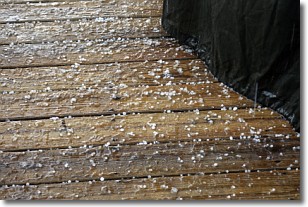Weather Alert in Texas
Flood Warning issued May 12 at 1:02AM CDT by NWS Houston/Galveston TX
AREAS AFFECTED: Polk, TX; San Jacinto, TX; Trinity, TX; Walker, TX
DESCRIPTION: ...The Flood Warning is extended for the following rivers in Texas... Navasota River near Normangee affecting Madison, Brazos and Grimes Counties. ...The Flood Warning continues for the following rivers in Texas... Trinity River near Moss Bluff affecting Liberty and Chambers Counties. Trinity River at Liberty affecting Liberty County. Trinity River at Riverside affecting San Jacinto, Polk, Walker and Trinity Counties. For the Trinity River...including Crockett, Riverside, Romayor, Goodrich, Liberty, Moss Bluff...Moderate flooding is forecast. For the Navasota River...including Normangee...Minor flooding is forecast. * WHAT...Minor flooding is occurring and minor flooding is forecast. * WHERE...Trinity River at Riverside. * WHEN...Until further notice. * IMPACTS...At 135.0 feet, Minor lowland flooding continues as significant backwater up Thomas Lake floods the lowest areas in the Green Rich Shore Subdivision in Walker County with the boat ramp completely inundated. The lowest lying areas in the Deep River Plantation Subdivision and FM 980 northwest of Riverside are threatened. * ADDITIONAL DETAILS... - At 12:30 AM CDT Monday the stage was 135.8 feet. - Bankfull stage is 132.0 feet. - Recent Activity...The maximum river stage in the 24 hours ending at 12:30 AM CDT Monday was 136.0 feet. - Forecast...The river is expected to fall to 133.9 feet Friday evening. - Flood stage is 133.5 feet. - Flood History...This crest compares to a previous crest of 135.7 feet on 06/29/2004. - http://www.weather.gov/safety/flood
INSTRUCTION: Turn around, don't drown when encountering flooded roads. Most flood deaths occur in vehicles. Motorists should not attempt to drive around barricades or drive cars through flooded areas. Additional information is available at www.weather.gov/hgx. The next statement will be issued this evening at 700 PM CDT.
Want more detail? Get the Complete 7 Day and Night Detailed Forecast!
Current U.S. National Radar--Current
The Current National Weather Radar is shown below with a UTC Time (subtract 5 hours from UTC to get Eastern Time).

National Weather Forecast--Current
The Current National Weather Forecast and National Weather Map are shown below.

National Weather Forecast for Tomorrow
Tomorrow National Weather Forecast and Tomorrow National Weather Map are show below.

North America Water Vapor (Moisture)
This map shows recent moisture content over North America. Bright and colored areas show high moisture (ie, clouds); brown indicates very little moisture present; black indicates no moisture.

Weather Topic: What is Rain?
Home - Education - Precipitation - Rain
 Next Topic: Shelf Clouds
Next Topic: Shelf Clouds
Precipitation in the form of water droplets is called rain.
Rain generally has a tendency to fall with less intensity over a greater period
of time, and when rainfall is more severe it is usually less sustained.
Rain is the most common form of precipitation and happens with greater frequency
depending on the season and regional influences. Cities have been shown to have
an observable effect on rainfall, due to an effect called the urban heat island.
Compared to upwind, monthly rainfall between twenty and forty miles downwind of
cities is 30% greater.
Next Topic: Shelf Clouds
Weather Topic: What is Sleet?
Home - Education - Precipitation - Sleet
 Next Topic: Snow
Next Topic: Snow
Sleet is a form of precipitation in which small ice pellets are the primary
components. These ice pellets are smaller and more translucent than hailstones,
and harder than graupel. Sleet is caused by specific atmospheric conditions and
therefore typically doesn't last for extended periods of time.
The condition which leads to sleet formation requires a warmer body of air to be
wedged in between two sub-freezing bodies of air. When snow falls through a warmer
layer of air it melts, and as it falls through the next sub-freezing body of air
it freezes again, forming ice pellets known as sleet. In some cases, water
droplets don't have time to freeze before reaching the surface and the result is
freezing rain.
Next Topic: Snow
Current conditions powered by WeatherAPI.com




